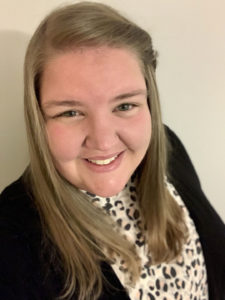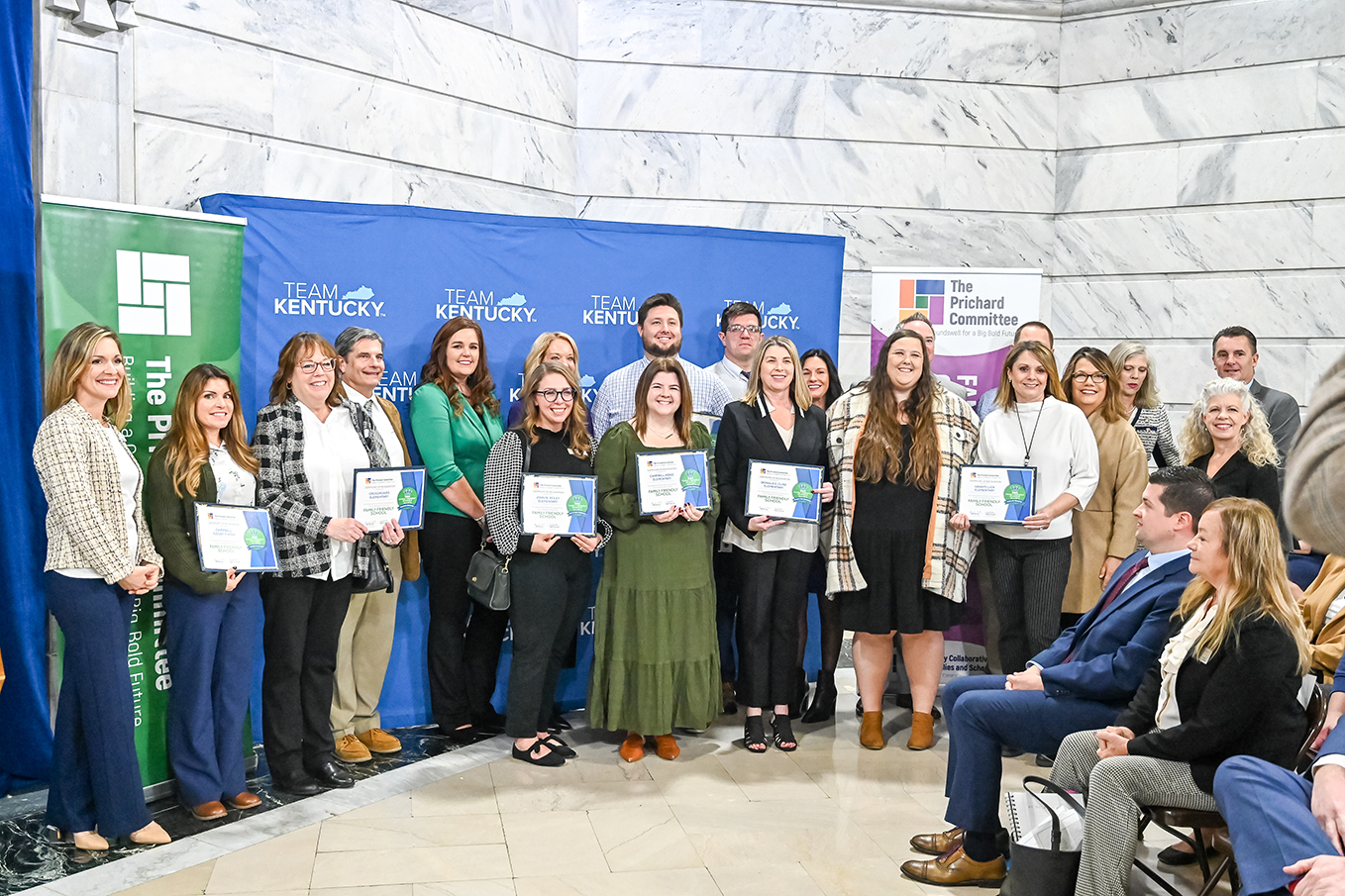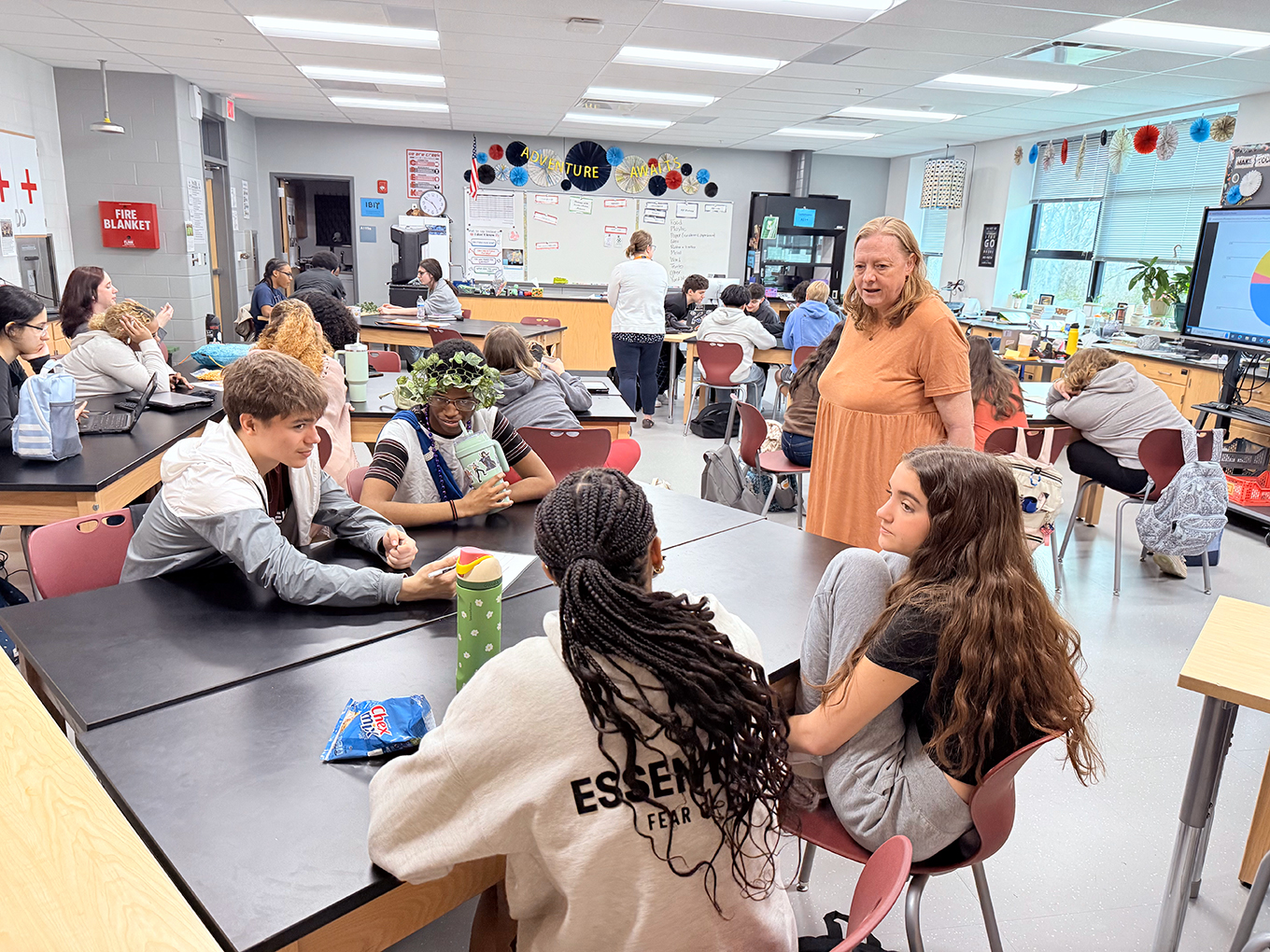
Molly Greer
Every classroom is composed of diverse learners with varying levels of ability. As teachers, we aim to meet the needs of every learner, yet determining the best supports for class-wide instruction with diverse learner is a challenge.
Through meeting this challenge of diversity in my own classroom, I found incorporating a functional vocabulary board (FVB) during all of my lessons provided all students with the supports they needed to succeed. By integrating functional vocabulary in every lesson, students were able to interact and participate even with varied levels of ability.
The FVB allowed me to prompt student engagement through color coding, picture supports and motor planning. With the implementation of the FVB as a class-wide support, students grew in multiple content areas.
What Research Tells Us
Functional vocabulary consists of frequently used words that appear in any language used to communicate a range of information – from basic needs or wants to academic thoughts – with peers and adults in the classroom setting. Research indicates that the use of an FVB allows students to increase language acquisition and the ability to communicate with their peers and caretakers. One study found that both students with learning disabilities and typically developing peers benefitted from instruction supported by FVBs.
Studies also have shown that behavioral challenges in the classroom decreased with an increase in the use of functional vocabulary board instruction due to a class-wide system of communication and explicit instruction on how to communicate. Another study concluded that, through continuous teaching, monitoring and reteaching of FVBs in a content lessons, students were able to increase academic achievement in reading, mathematics and other content areas in a co-teaching experimental classroom.
Creating and Organizing Functional Vocabulary Boards
When choosing the functional vocabulary words for my classroom, I met with the school speech and language pathologist (SLP) and the district SLP coach. This conversation lasted approximately four hours. The process we worked through to determine the best 64 words for our diverse students’ learning and engagement included:
- Independent identification: We started with a list of functional vocabulary presented to us by the district. This list included verbs, pronouns, descriptive words and question words. The three of us combed through the lists independently to highlight the words we determined were most important for our students. For me, I was looking at the daily life of the student and their needs in the home and classroom setting. The speech and language pathologists were looking for terms to enhance their students’ language development in the future.
- Collaborative discussion: After reading and highlighting words, we discussed which ones we thought were essential for our students to know to aid functional communication. We went through the list to identify (a) words we all agreed were essential to student knowledge, (b) words we felt we could eliminate, and (c) words we personally thought needed to be on the board. The final step was the hardest conversation. We had to determine if the word was essential to the students’ long-term goals and not just in the classroom. We took a list of more than 400 words and narrowed the scope to 132 words.
- Focusing the list: After we had narrowed the list down to 132 words, we had to decide which words we would use on a daily basis. The idea of an FVB is to implement the words on the board into everything taught throughout the day. Through extensive discussions, we further narrowed our list to 64 words.
- Organizing the final list: Once we had our list of words, we organized them into question words, pronouns, verbs, descriptive words, prepositions, connector words and general phrases.
- Creating the functional vocabulary board: After the words were organized and sorted, we created the FVB. Each set of words were assigned a specific color and visual support. The words were organized to help students have a flow with their communication. This process and flow can be different for every classroom, but for our classroom this structure was the easiest way to design the board for students’ needs.
Implementation
On day one of the journey, we provided every student with an FVB and had a large FVB on the interactive whiteboard. Students were guided through a word hunt. The speech language pathologist and I set aside collaborative lesson time twice a week so we could introduce the board together. We taught expectations and how to use the FVB. The students loved the interactive lesson!
After the introduction week, we taught collaboratively using pre-recorded lessons, which allowed us to help students during a lesson. We then broke out into small groups. The first collaborative lesson was at the beginning of the week, to establish the focus of the week. Then the next collaborative lesson occurred at the end of the week.
The pre-recorded videos consisted of:
- The introduction of the word.
- Everyone finds the word on their personal board.
- The teacher on the video calls on students to show the word (teachers monitor for student participation and misconceptions).
- Teacher on video models how to use the word for the lesson.
- Everyone practices the model together.
- Students practice on their individual board.
- Teacher on video calls on students to practice the phrase (teachers monitor).
- Video ends with separating the class into small groups to practice the concept with either teacher.
I taught with the FVB for speech group, literacy, snack time, social skills time and lunch time. Each lesson outside of the collaborative speech lesson did not have a video, but the presentation of the lesson was very similar.
How did this impact the students?
Students enjoyed interacting with the functional vocabulary board and their engagement with lessons increased. During a typical reading whole group lesson with the board, the students remained engaged approximately 13 minutes longer than the previous average engagement of 15 minutes.
The acquisition of new words varied from student to student. Some students learned multiple words using the FVB and were able to communicate basic needs and wants. In the course of six months, two students with limited verbal vocabulary were able to independently identify and use between six and 17 words with an average of 76% accuracy. Other students used the FVB to expand their already established language.
Using the colored categories, students were able to expand their current vocabulary and sentence structure with an increase in sentence formation from a baseline average of 50% accuracy creating a 3-word sentence, moving to a 4-word sentence with an average of 66% accuracy. Watching a student with no previous functional communication participate and have a voice in a lesson was worth the many hours of collaboration and creation of the FVB.
Molly Greer is a doctoral student in the College of Communication Innovation and Education at the University of Central Florida. She taught students with moderate to severe disabilities in Kentucky for five years in Boone County and Oldham County.




Hey! Of course I have lesson plans and some videos I can share with you. If you can reach out to my school email I will get that information to you. My email is molly.greer@knights.ucf.edu
I would love to see examples of your lessons and vocabulary list rather than “recreating” the wheel. Is this information accessible?
Yes! I would love this as well!